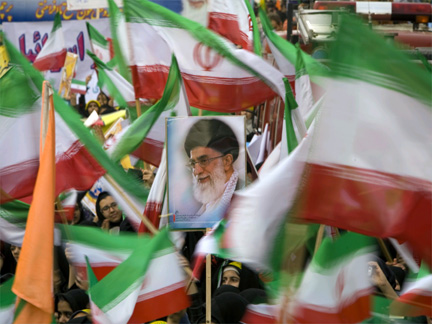Iran in 2015: Great expectations and great responsibilities

2014 was a year marked by modest stability despite difficulties for Iran. It was a year that many inside and outside of the country anticipated a breakthrough in the nuclear talks, thereafter hoping for lifting of economic sanctions and flood of foreign investments.
Anticipating major improvements in the economy, possibility of oil export quickly doubling, automotive industry recovering fast and unemployment and inflation entering an adequate level. Despite, high expectations and abundance of optimism, as thoughts turned to 2015 and a new nuclear deadline – optimism quickly faded.
Surely, 2015 will be of high stakes for Iran as the nature of challenges the country faces are extremely complex, but not because of “deal or no deal” nature of the nuclear negotiations or the anticipated parliamentary election. For much of 2015 it will be more about how Iran will navigate through region’s division – economic, political and cultural that will draw most attention.
In fact, the key challenge that faces Iran in the highly unstable Middle East is that it is becoming increasingly difficult to effectively design policy and drive coherent decision-making.
In this fast moving, in often unpredictable directions and interconnected yet dysfunctional region – Iran has been required to respond quickly to these challenges and adopt an integrated approach when searching for solutions.
For Iran, 2015 will be shaped by a much more troubled regional and global geopolitical situation, which is characterized by a new level volatility and complexity as events in the Middle East have shown in recent years. The global political system is highly fragmented and becoming increasingly more so. There is an increased backlash against globalization and a retreat to nationalism or regionalism supported by ideological motives. This disconnect between the economic and political structures is a great concern, as it creates a region that is more and more interconnected, allowing shocks to spread quickly, but also a Middle East region where no-one is seemed to be in charge.
This leadership crisis is a trend which cuts across all the other issues, and it is rising sharply, in the Middle East region. The danger is that instead of innovating and collaborating to tackle societal and economic challenges, regional countries and leaders will continue to retreat into isolationism, further exacerbated by nationalist rhetoric and a revision to old paradigm in geopolitical power-play. Today’s challenges in the Middle East requires an Iran with bold leadership and courage, and progress can only be achieved through enhanced cooperation between business, government, academia and civil society.
For Iran and Iranians, 2015 will be a year of great expectations, unlike 2014 that expectations were limited to the nuclear agreement and lifting of economic sanctions, this year, there is so much potentials and high standards. This is doomed to succeed. This successful transition has certain key features and challenges; a need for remarkable leadership; and most important a political evolution that creates the environment where change seems possible. But perhaps the most important prerequisite for a successful transition is a record of progress that convinces the majority of Iranians that change can happen if they commit themselves to achieving it. Another reason for all this progress is that Iranians are becoming much better at understanding what works how to measure it and how to know if their country is on track or not.
I’m an optimist. I believe when people realize their potentials by focusing on solutions, they will no longer tolerate any failure to deliver those solutions to the people who need them. Iranians want a more equitable Iran. And, in a very practical way, that Iran is within their grasp. It is time to turn the table by realizing and utilizing Iran’s demographic asset that has been perceived more as a demographic burden in the past. This is a year to reform that would target a more dynamic private sector to jump-start the Iranian economy.
It is time to implement adequate reforms that ensure sustained job-intensive growth, refocus education and training, and enhance labor market flexibility. This year Rouhani Administration must focus on creating opportunities for entrepreneurship and be more supportive of small and medium businesses. Iran needs to have policies that support the growth of private sector investment and ensure this growth is distributed to all Iranians. President Rouhani and his administration must find a way to foster entrepreneurial spirit – but to do this, the public must be convinced that they will directly benefit from a healthier private sector. Today, many Iranians believe that private sector growth will come at their expense. In general, many Iranians are not convinced that their future will be bright. Young Iranians are seeing a lack of opportunity to succeed, lower standards of quality of life and then this is causing society to become more broken. This needs to be targeted in the form of reforms that need to be worked in conjunction with policies of economic reform. President Rouhani and his team need to focus on initiatives that could ultimately create the stability the country needs. The region has witnessed revolutions in some countries, and others are at stake, and if serious actions of reform are not taken, social instability could follow.
Iranians tend to see each year as extraordinary and in some senses, each year is. But in a broader sense, 2014 was merely another year in a long chain of success and despair for Iran. But an important truth remains in Iran’s soil and that is the resistance and resiliency of this nation that continues to grow, in the face of history, adversity and suffering. The broad forces of history and geopolitics have shaped Iran, but Iranians live their lives with great expectations and surely great responsibilities and 2015 will be no exception.







